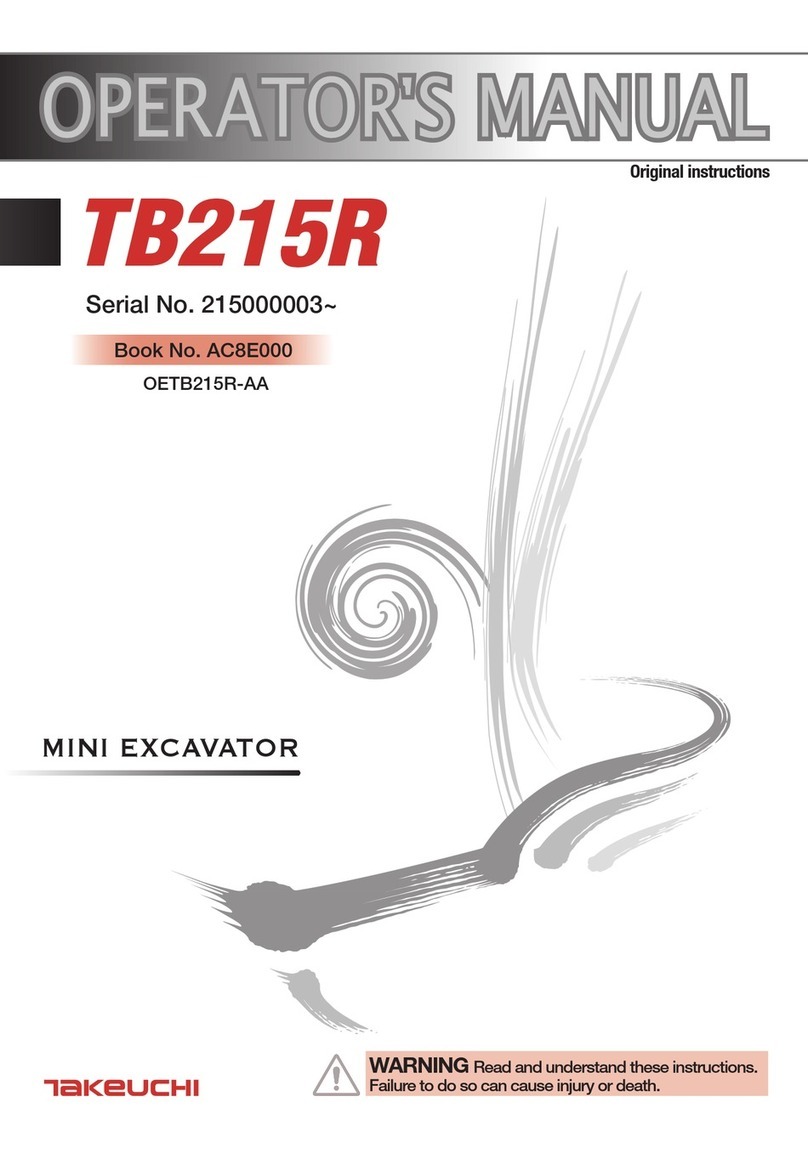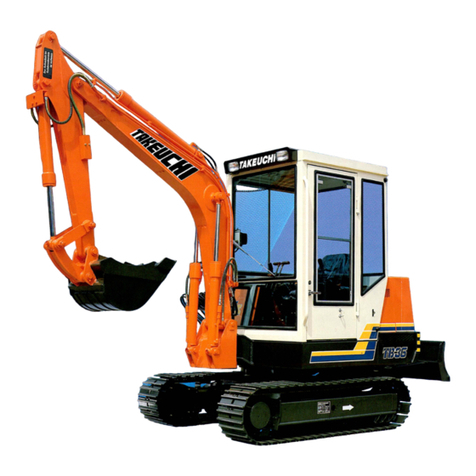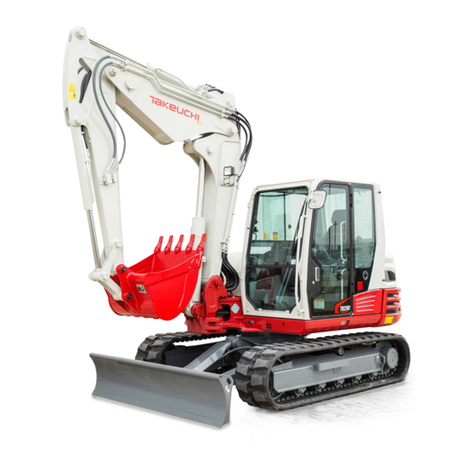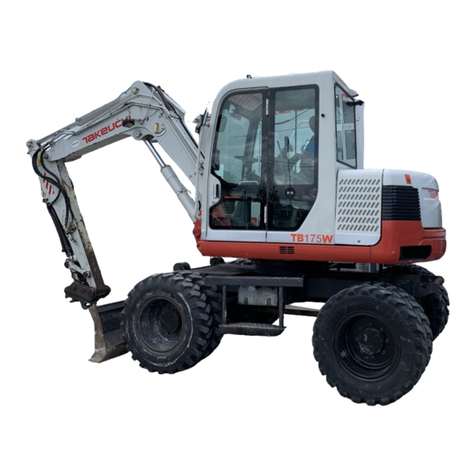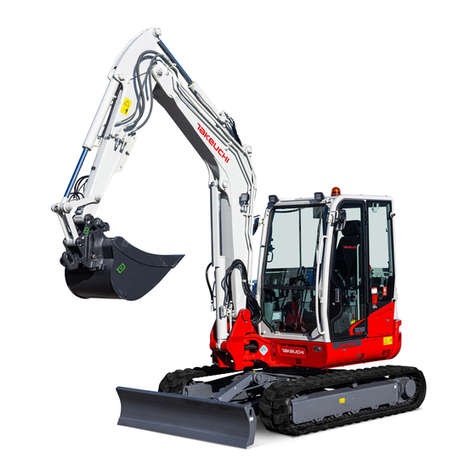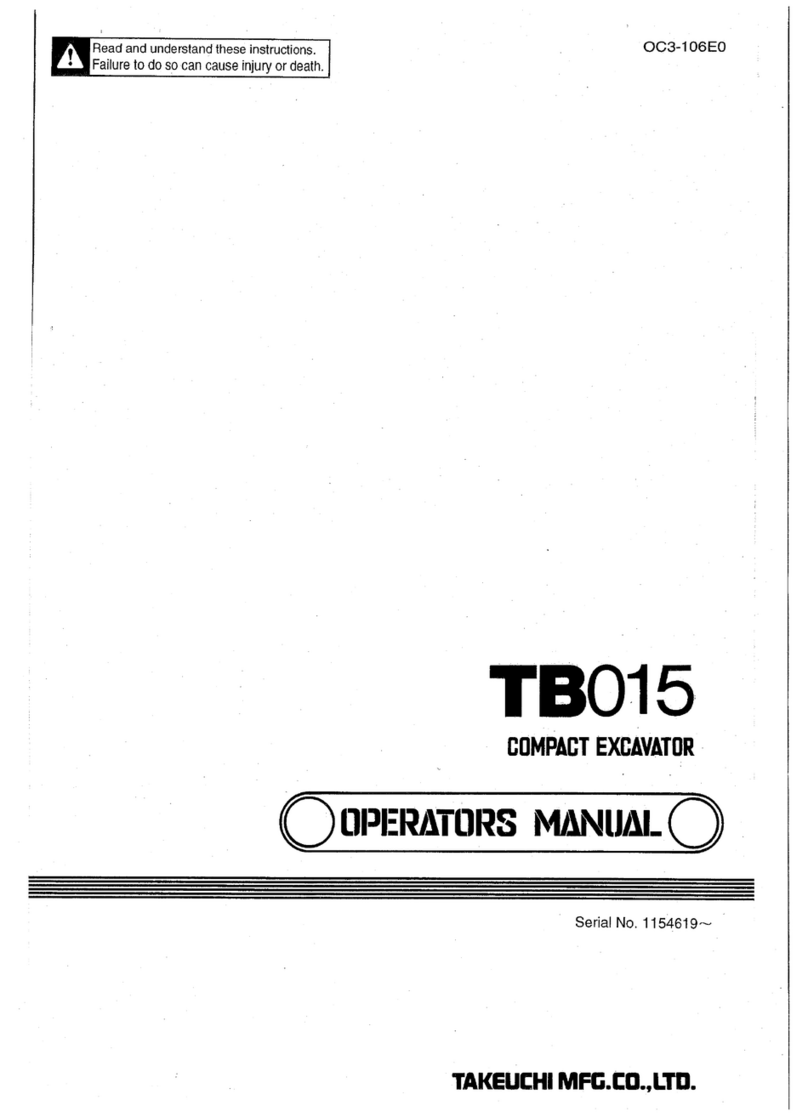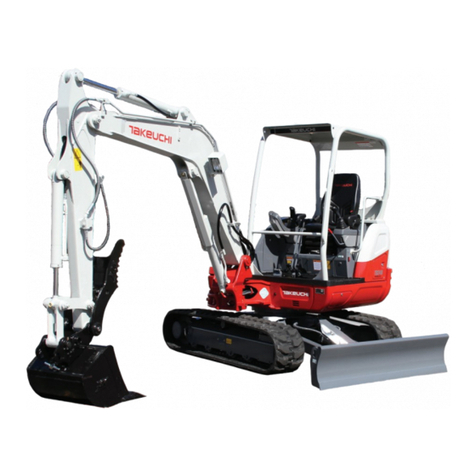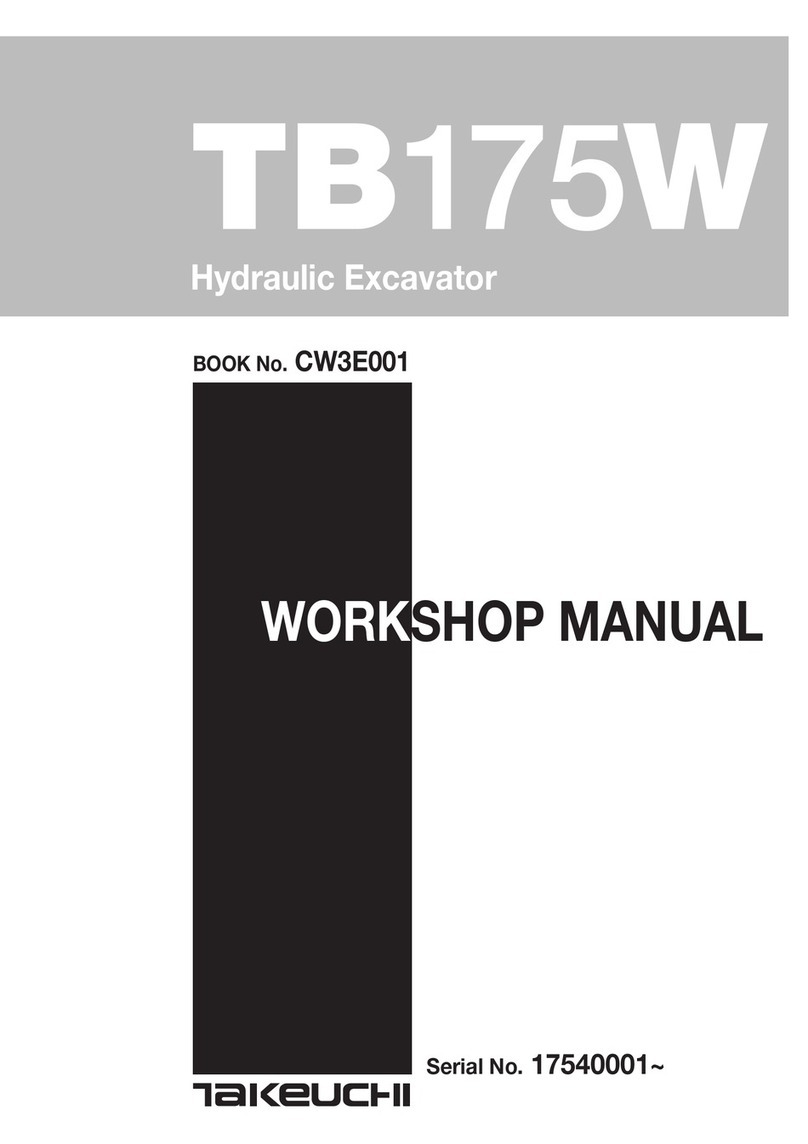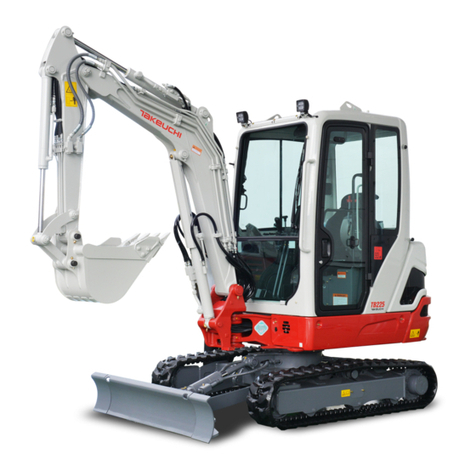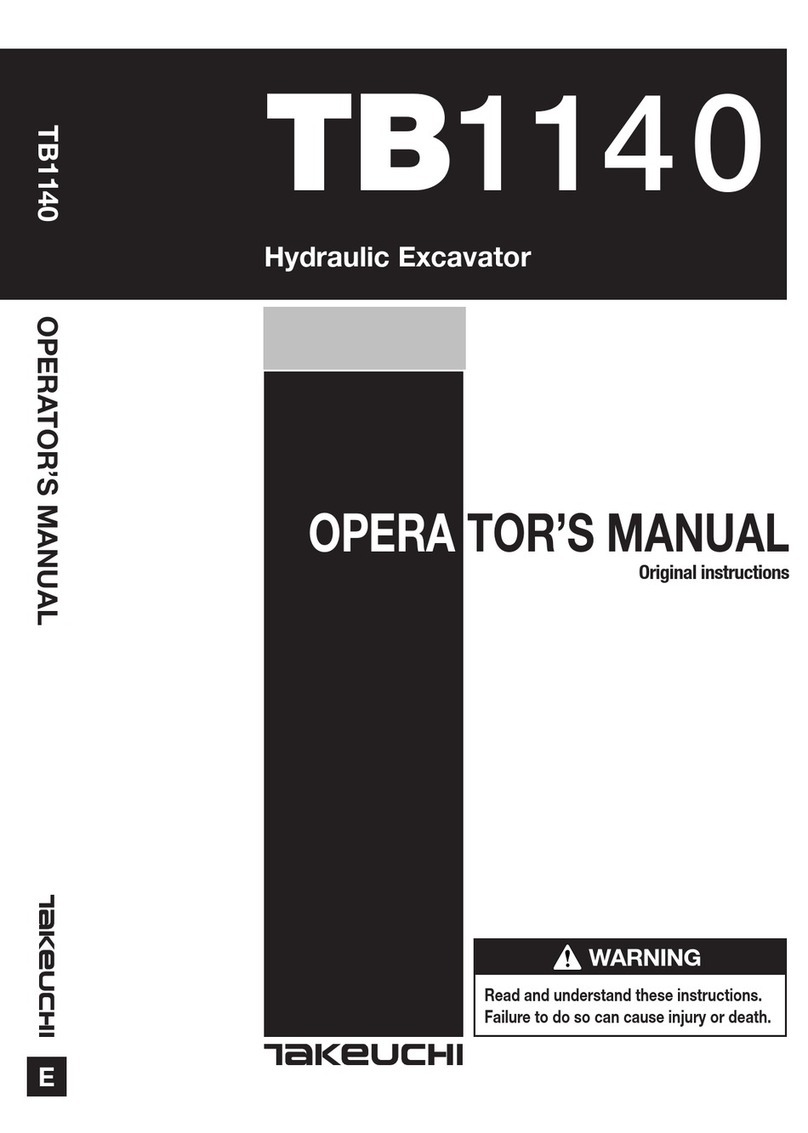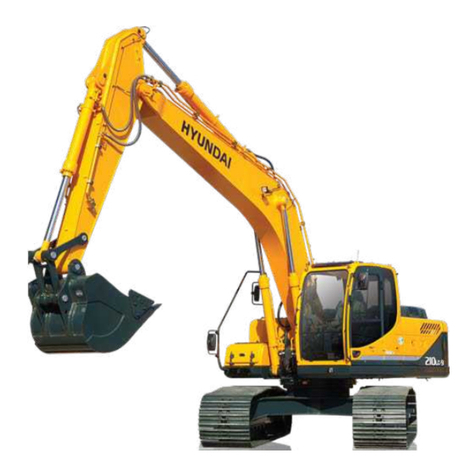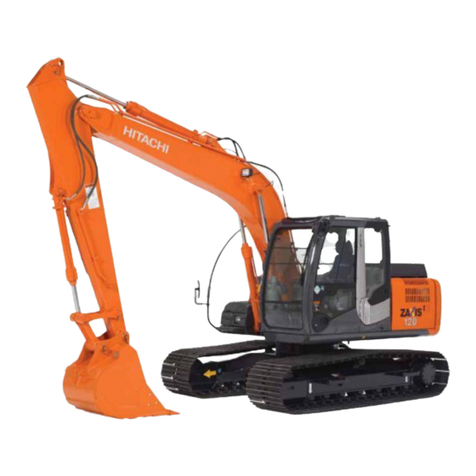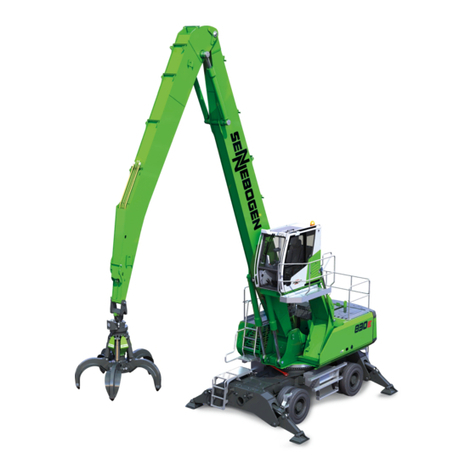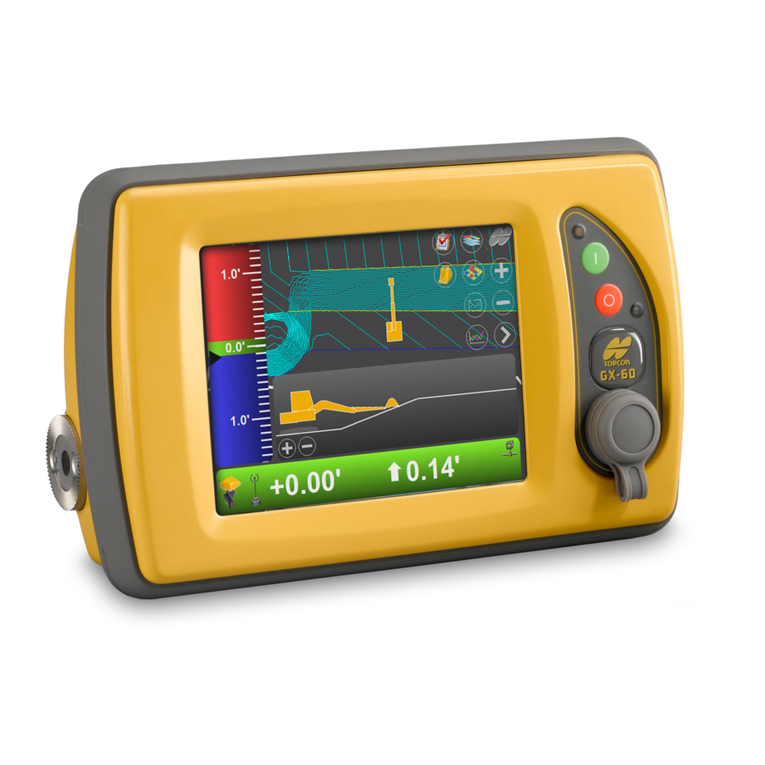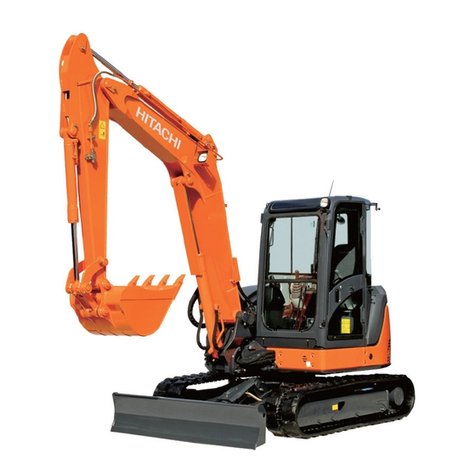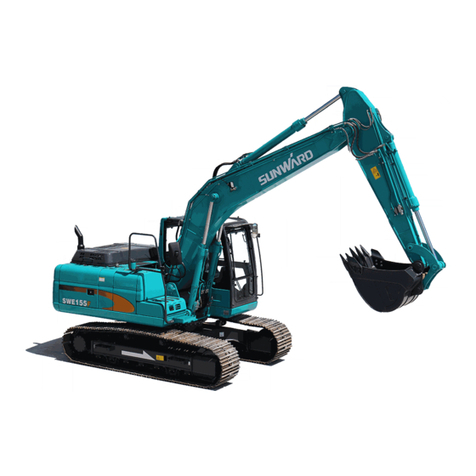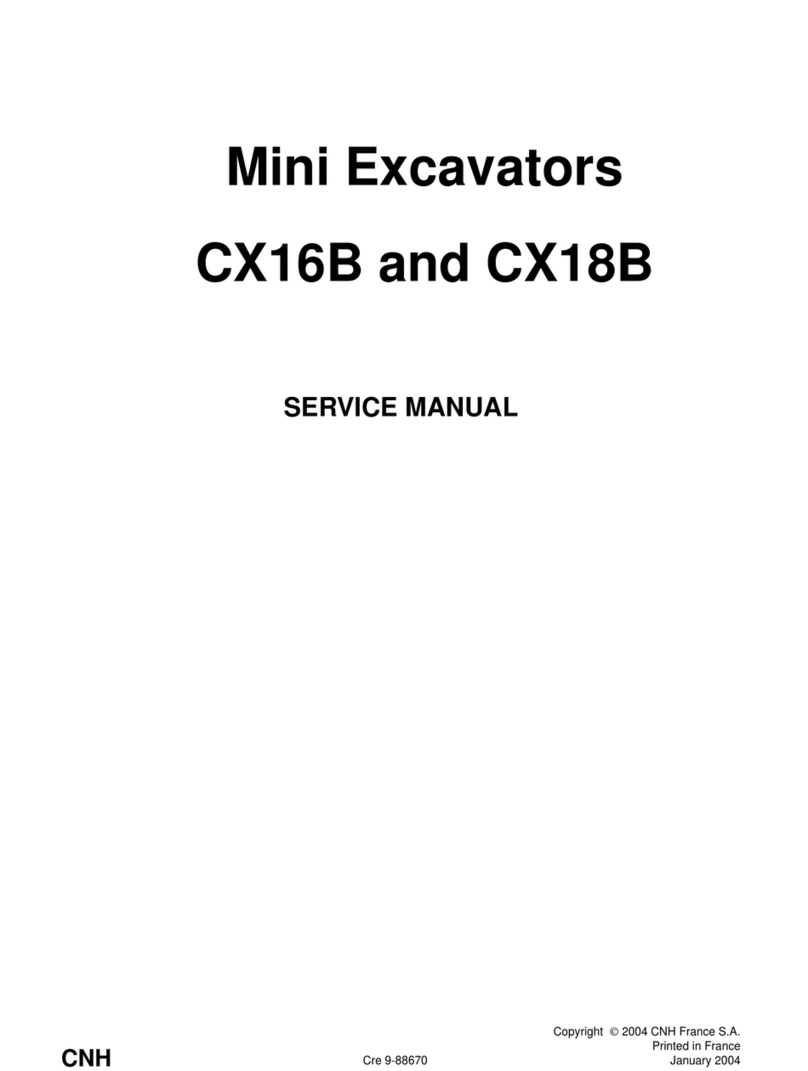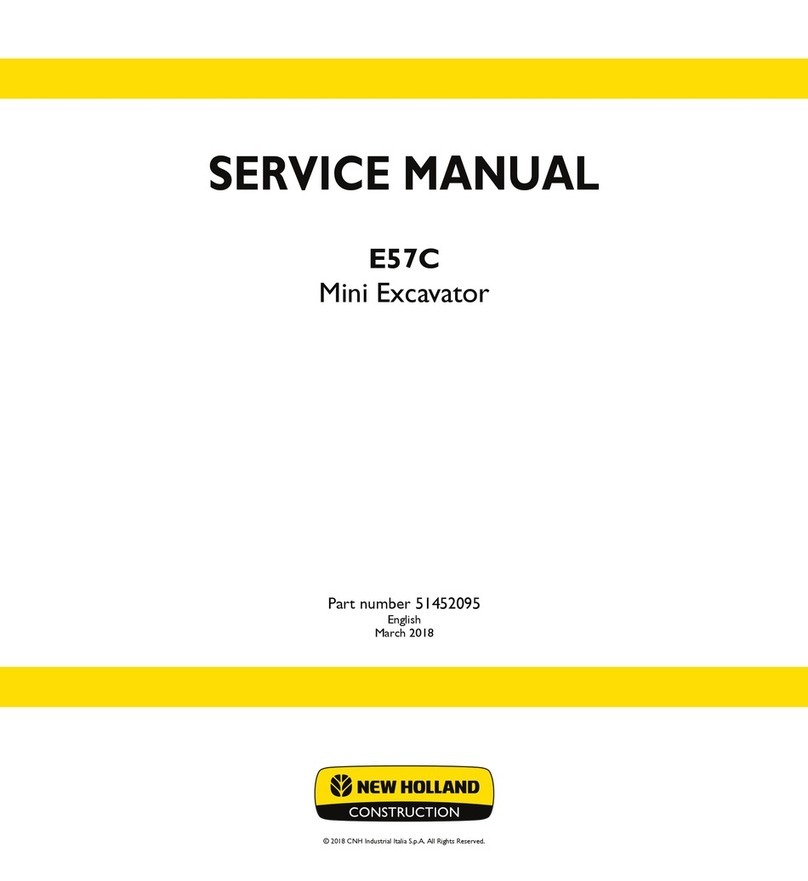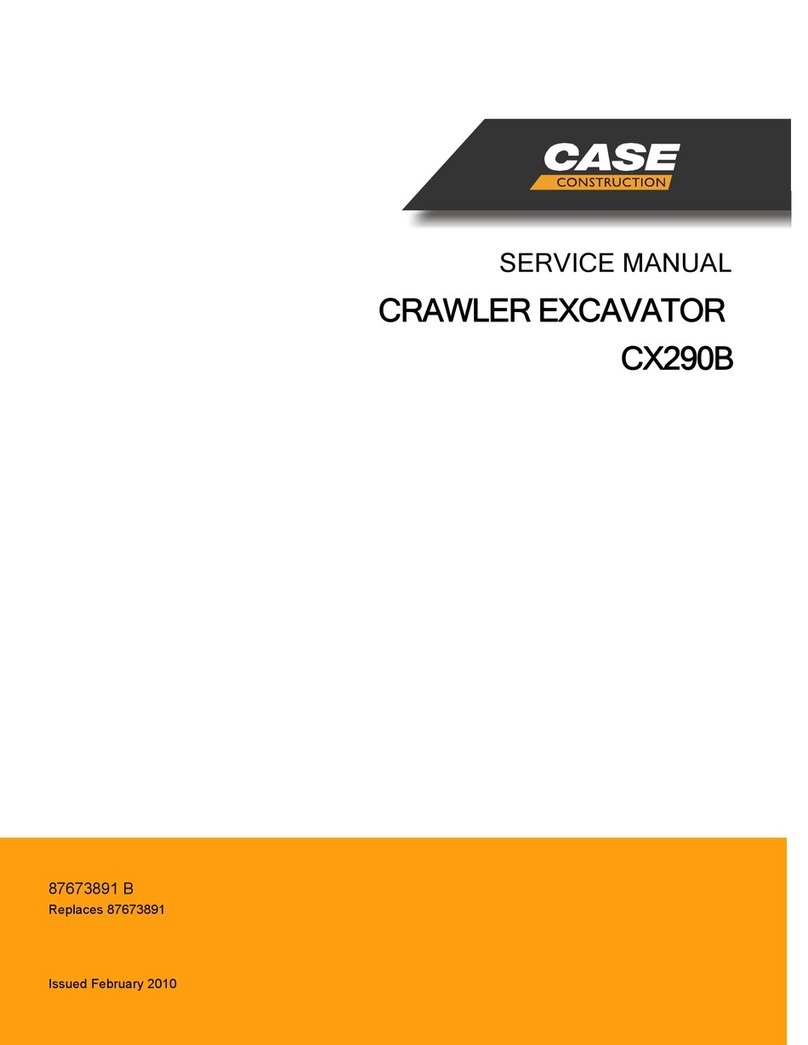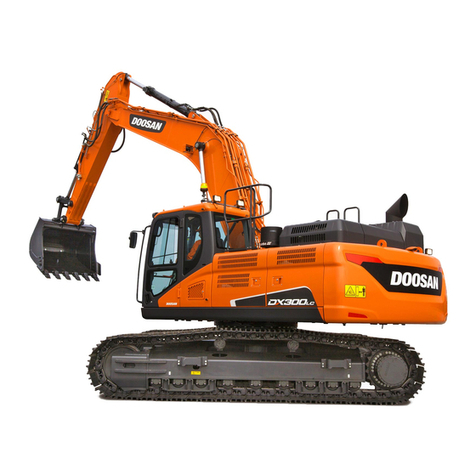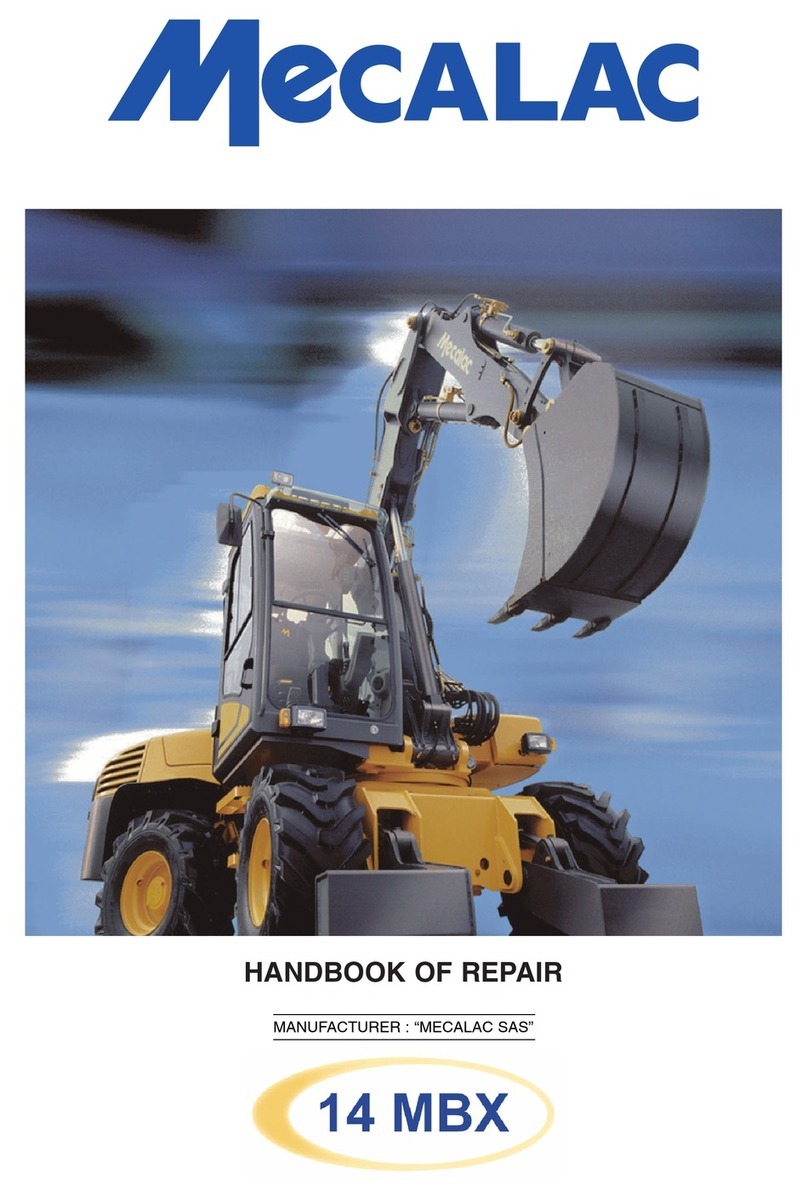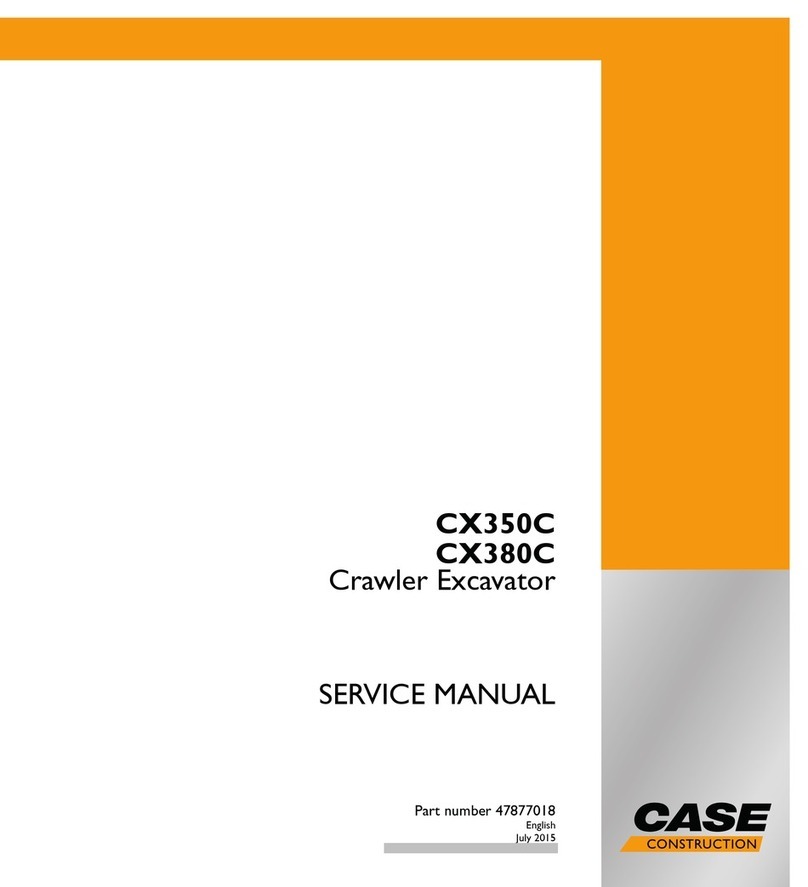
0-5
CONTENTS
Introduction .....................................0-2
Machine description........................0-3
Safety ..............................................1-1
General precautions ................................ 1-2
Precautions when preparing .................... 1-8
Precautions when starting ..................... 1-12
Precautions when operating .................. 1-14
Precautions when stopping ................... 1-25
Precautions when transporting .............. 1-26
Precautions on maintenance ................. 1-28
Safety signs (decals) .............................. 1-39
Controls ...........................................2-1
Names of components ........................... 2-2
Covers..................................................... 2-4
Starter key........................................... 2-4
Front cover (tool box)........................... 2-4
Tool box............................................... 2-5
Fuel filler port ....................................... 2-5
Right side cover................................... 2-6
Left side cover .................................... 2-6
Engine hood ........................................ 2-7
Maintenance cover .............................. 2-7
Cab ......................................................... 2-8
Cab door ............................................. 2-8
Front window....................................... 2-9
Lower front window ........................... 2-10
Side window...................................... 2-11
Emergency exit.................................. 2-11
Seat and seat belt ................................. 2-12
Air Suspension Seat .......................... 2-12
Seat belt............................................ 2-15
Multi-information display........................ 2-16
Main Menu screen ............................. 2-16
Screen navigation .............................. 2-28
Switching images .............................. 2-33
Control console ..................................... 2-35
Switches............................................ 2-35
BUttons ............................................. 2-39
Switches ............................................... 2-41
Starter switch .................................... 2-41
Engine shutdown switch.................... 2-41
Throttle controller............................... 2-41
Horn button ....................................... 2-42
Deceleration button ........................... 2-42
Travel select button ........................... 2-43
First auxiliary hydraulic switches......... 2-43
Second /Fourth auxiliary hydraulic
switch................................................ 2-44
Outrigger switches (If equipped)......... 2-44
Third auxiliary hydraulic switch and
button................................................ 2-44
Aux. 2/4 select button ....................... 2-44
Light switch ....................................... 2-45
Lift overload warning switch
(If equipped)....................................... 2-45
Auxiliary 1st flow rate select switch .... 2-46
Detent mode switch (Auxiliary 1st) ..... 2-46
Beacon lamp switch .......................... 2-47
Lower wiper switch (If equipped)........ 2-47
Image select switch (CAMERA).......... 2-47
Levers and pedals ................................. 2-48
Safety lock lever ................................ 2-48
Slew lock pin ..................................... 2-48
Steering wheel................................... 2-49
Turn signal lever................................. 2-50
Brake pedal ....................................... 2-50
Travel pedal ....................................... 2-51
Second boom pedal (2-piece boom).. 2-51
Operating levers ................................ 2-52
Blade lever......................................... 2-52
Blade /Outrigger lever
(if equipped)....................................... 2-52
Air conditioner ....................................... 2-53
Cautions on use ................................ 2-53
Names of components ...................... 2-54
Control panel operation ..................... 2-55
General system operation .................. 2-56
Defrosting or defogging operation...... 2-56
Air conditioner (A/C) operation ........... 2-57
Ventilation (Fresh /Recirc) .................. 2-57
Outlets............................................... 2-57
Accessories........................................... 2-58
Cup holder ........................................ 2-58
Cigarette lighter ................................. 2-58
Ashtray .............................................. 2-59
Interior light........................................ 2-59
Mirrors............................................... 2-59
12 V power socket ............................ 2-60
24 V external power sockets.............. 2-60
Radio (for cab) ................................... 2-61
Auxiliary hydraulic lines ...................... 2-65
Operating the machine with an
accumulator ...................................... 2-70
Load safety device............................. 2-71
Outrigger ........................................... 2-73
Fuel Supply Pump ............................. 2-74

